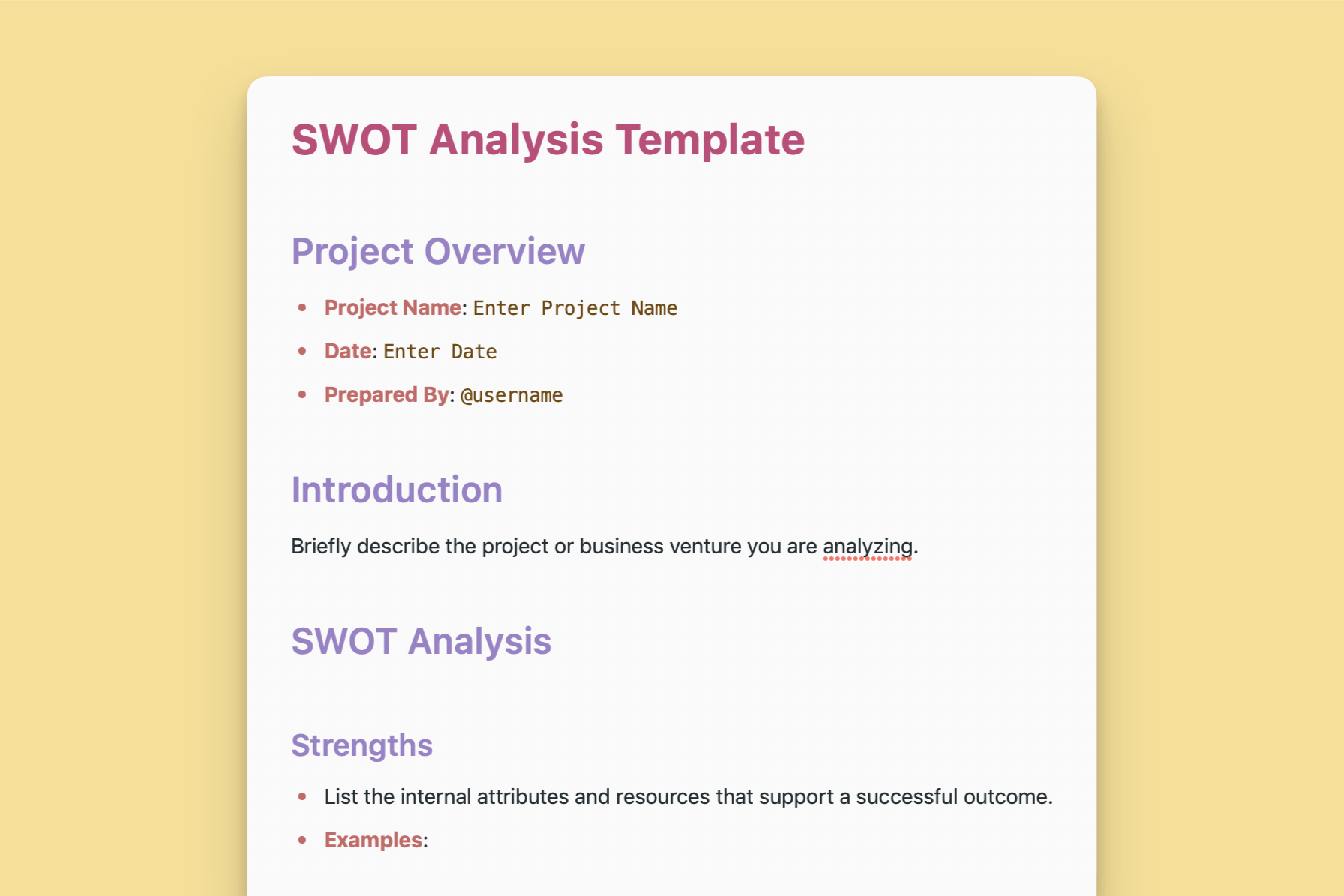Home

SWOT Analysis
The SWOT Analysis Template is a structured tool for identifying strengths, weaknesses, opportunities, and threats to guide strategic decision-making.
Get things done with NotePlan
Categories
The SWOT Analysis Template is a powerful and versatile tool used in strategic planning, project management, and business development. It provides a structured framework for assessing the internal and external factors that can influence a project, product, or organization's success. This template serves as a roadmap, helping you identify strengths to leverage, weaknesses to address, opportunities to pursue, and threats to mitigate.
Why Conduct a SWOT Analysis?
- Informed Decision-Making: By understanding your strengths, weaknesses, opportunities, and threats, you can make well-informed decisions that align with your goals and risk tolerance.
- Strategic Planning: A SWOT analysis informs your strategic planning process, helping you create actionable plans that maximize strengths and opportunities while minimizing weaknesses and threats.
- Risk Management: Identifying potential threats allows you to develop contingency plans and proactively manage risks.
- Competitive Advantage: By understanding your competitors' strengths and weaknesses, you can identify opportunities for differentiation and competitive advantage.
How to Use the SWOT Analysis Template
Project Overview:
- Clearly identify the project or business venture you are analyzing.
- Specify the date to track the analysis's relevance over time.
- Indicate who is responsible for preparing and maintaining the analysis.
Introduction:
- Provide a concise overview of the project's purpose, scope, and goals. This sets the context for the analysis.
SWOT Analysis:
- Strengths: List the internal attributes and resources that give you a competitive edge. These could be a strong brand, skilled team, innovative products, or efficient processes.
- Weaknesses: Identify internal limitations that could hinder your success. These might include a limited budget, lack of expertise in a specific area, or outdated technology.
- Opportunities: Explore external factors that you can leverage for growth and success. These could be emerging markets, new technologies, changing regulations, or shifting consumer preferences.
- Threats: Assess external factors that could pose risks to your project or organization. These might include economic downturns, increased competition, disruptive technologies, or natural disasters.
- For each category, use the provided checkboxes to add specific items to your analysis.
Action Plan:
- Define a clear objective based on your SWOT analysis findings. What specific goals do you want to achieve?
- Develop actionable tasks that address your strengths, weaknesses, opportunities, and threats. Assign responsibility for each task to ensure accountability.
Conclusion:
- Summarize the key takeaways from your analysis. What are the most critical factors influencing your project's success?
- Highlight any final thoughts or recommendations based on your findings.
Key Points:
- Regularly review and update your SWOT analysis as conditions change and new information becomes available.
- This template can be adapted for various projects and organizations.
- The thoroughness and accuracy of your SWOT analysis are crucial for its effectiveness in guiding your decision-making.
By following this template and investing time in a thoughtful SWOT analysis, you can gain valuable insights into your project's landscape, empowering you to make strategic choices that drive success.